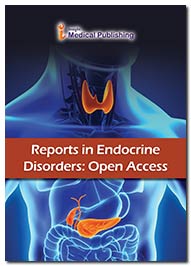Study Of Levels Of Selective Oxidative Stress Markers (Malondialdehyde, Zinc, And Antioxidant Vitamins A, E, And C) In Ischemic And Non-Ischemic Heart Disease Patients Suffering From Type- 2 Diabetes.
ABD ELGADIR A ALTOUM
Department of Medical Laboratory Sciences, College of Health Sciences, Gulf Medical University, Ajman, UAE.
Abstract
Objective: The objective of the current study is to compare the levels of oxidative stress markers malondialdehyde (MDA), zinc, and antioxidant Vitamins (A, E, and C) in ischemic heart disease (IHD) and non-IHD patients with diabetes mellitus. Method: This is cross-sectional study group, conducted in the advanced diagnostic center (Khartoum- Sudan). Comprised 100 healthy subjects were, control group with mean (fasting blood sugar) 5.61=m mol/L, the age ranged from 22 to 78 years old, the average of the age was 50.1 years. 300 patients (78 IHD and 222 without) as cases groups, the ages ranged from 30 to 80 years. The age average was 51.2 years, all samples were in a state of fasting for 12 h, and the data were collected using a structured questionnaire and direct interview to collect information. Blood specimens were collected from both groups, and plasma levels of MDA, zinc, and antioxidant Vitamins (A, E, and C) were determined.
Abstract: Objective: The objective of the current study is to compare the levels of oxidative stress markers malondialdehyde (MDA), zinc, and antioxidant Vitamins (A, E, and C) in ischemic heart disease (IHD) and non-IHD patients with diabetes mellitus. Method: This is cross-sectional study group, conducted in the advanced diagnostic center (Khartoum- Sudan). Comprised 100 healthy subjects were, control group with mean (fasting blood sugar) 5.61=m mol/L, the age ranged from 22 to 78 years old, the average of the age was 50.1 years. 300 patients (78 IHD and 222 without) as cases groups, the ages ranged from 30 to 80 years. The age average was 51.2 years, all samples were in a state of fasting for 12 h, and the data were collected using a structured questionnaire and direct interview to collect information. Blood specimens were collected from both groups, and plasma levels of MDA, zinc, and antioxidant Vitamins (A, E, and C) were determined. Results: There was a significant difference between the level of serum Vitamin A, E, Zinc and MDA in diabetic patients with IHD and those diabetic without IHD (p<0.05). No significant differences in serum Vitamin C level between both groups (p>0.05). Conclusion: Due to the significant differences in serum Vitamin A, E, Zinc, and MDA between diabetics with IHD and diabetics without IHD, these parameters can be used as prognostic markers for prediction of oxidative stress and antioxidant stress of diabetic patients with IHD
Biography
Dr. Abdelgadir Elamin is an Assistant Professor in Medical Laboratory Sciences Program of College of Health Sciences, Gulf Medical University. He has more than 15 years of teaching and research experience and published several scientific papers in reputed journals. Education B.Sc. Medical Laboratory Sciences (Clinical Chemistry) from University of Science and Technology, Sudan in 2002. M.Sc. Clinical Chemistry from Sudan University for Sciences and Technology, Sudan in 2008. Ph.D. in Clinical Chemistry from University of Science and Technology, Sudan in 2015. Research Interests focus on Oxidative stress-induced risk factors associated with the metabolic syndrome Diabetes Cardiovascular Disorders and Antioxidant.
Open Access Journals
- Aquaculture & Veterinary Science
- Chemistry & Chemical Sciences
- Clinical Sciences
- Engineering
- General Science
- Genetics & Molecular Biology
- Health Care & Nursing
- Immunology & Microbiology
- Materials Science
- Mathematics & Physics
- Medical Sciences
- Neurology & Psychiatry
- Oncology & Cancer Science
- Pharmaceutical Sciences
